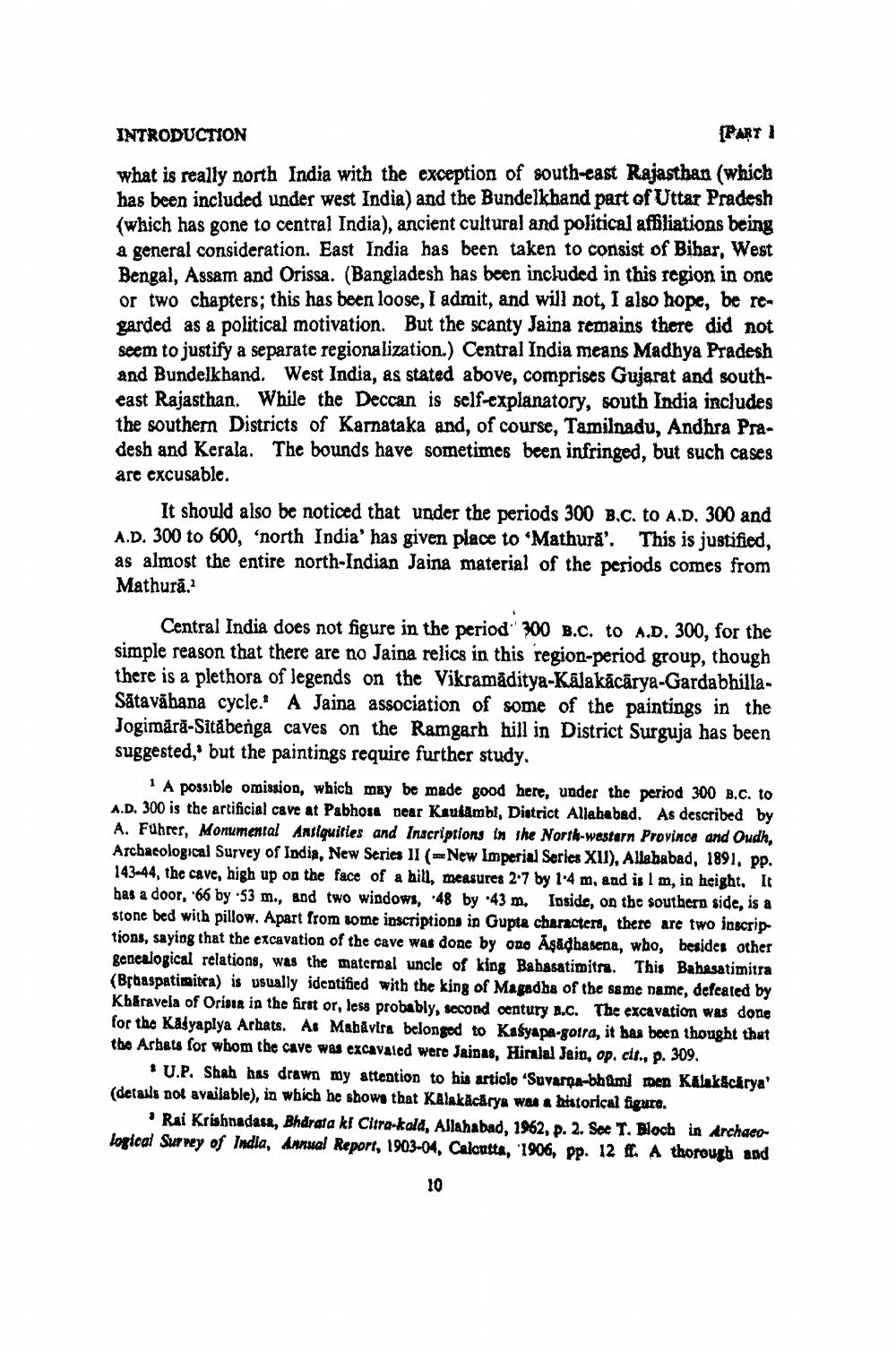________________
INTRODUCTION
PARTI
what is really north India with the exception of south-east Rajasthan (which has been included under west India) and the Bundelkhand part of Uttar Pradesh (which has gone to central India), ancient cultural and political affiliations being a general consideration. East India has been taken to consist of Bihar, West Bengal, Assam and Orissa. (Bangladesh has been included in this region in one or two chapters; this has been loose, I admit, and will not, I also hope, be regarded as a political motivation. But the scanty Jaina remains there did not seem to justify a separate regionalization.) Central India means Madhya Pradesh and Bundelkhand. West India, as stated above, comprises Gujarat and southeast Rajasthan. While the Deccan is self-explanatory, south India includes the southern Districts of Karnataka and, of course, Tamilnadu, Andhra Pradesh and Kerala. The bounds have sometimes been infringed, but such cases are excusable.
It should also be noticed that under the periods 300 B.C. to A.D, 300 and A.D. 300 to 600, 'north India' has given place to 'Mathura'. This is justified, as almost the entire north-Indian Jaina material of the periods comes from Mathurā.
Central India does not figure in the period200 B.C. to A.D. 300, for the simple reason that there are no Jaina relics in this region-period group, though there is a plethora of legends on the Vikramaditya-Kalakācārya-GardabhillaSātavābana cycle. A Jaina association of some of the paintings in the Jogimära-Sitábenga caves on the Ramgarh hill in District Surguja has been suggested, but the paintings require further study.
1 A possible omission, which may be made good here, under the period 300 B.C. to A.D. 300 is the artificial cave at Pabhos& near Kaulambi, District Allahabad. As described by A. Führer, Monumental Anslquities and Inscriptions in the Norsk-western Province and Oudh, Arcbacological Survey of India, New Series II (-New Imperial Series XII), Allababad, 1891, pp. 143-44, the cave, high up on the face of a hill, measures 27 by 14 m, and is 1 m, in height. It has a door, 66 by :53 m., and two windows, 48 by .43 m. Inside, on the southern side, is a stone bed with pillow. Apart from some inscriptions in Gupte characters, there are two inscrip tions, saying that the excavation of the cave was done by on Aşadhasena, who, besides other genealogical relations, was the materoal uncle of king Babasatimitru. This Bahasatimitra (Broaspatimitra) is usually identified with the king of Magadha of the same name, defeated by Kharavela of Orisia in the first or, less probably, second century a.c. The excavation was done for the Kasyaplya Arhats. As Mahavira belonged to Kaśyapa-gotra, it has been thought that the Achats for whom the cave was excavaled were Jaidas, Hiralal Jain, op. cit., p. 309.
.U.P. Shab has drawn my attention to his article "Suvarda-bhumi mpen Kalakackrya' (details not available), in which he shown that Kalakacărys was a historical figure.
Rai Krishnadasa, Bhdrata kl Citra-kold, Allahabad, 1962, p. 2. Soe T. Bloch in Archaeological Survey of India, Annual Report, 1903-04, Calcutta, 1906, pp. 12 ff. A thorough and
10




